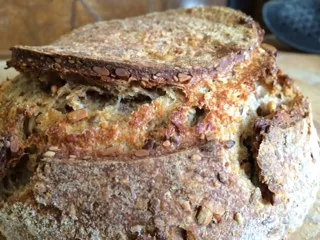New Sourdough Variations -- Walnut, Berry, Olive

I experimented with some levain bread variations this past weekend, inspired by Maurizio's beautiful blog (Food,Travel, Thought -- so well done). I made a double batch of Tartine-esque dough, adding walnuts and various dried berries to one half, and mixed olives and lemon zest to the other.
- Log in or register to post comments
- 10 comments
- View post
- Maine18's Blog







